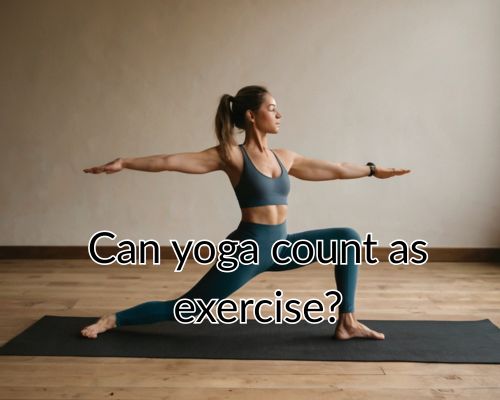Deciding between Hatha and Vinyasa yoga can be a challenge for many newcomers or those looking to switch up their practice.
Hatha yoga is generally considered easier for beginners due to its slower pace and focus on holding poses. This offers time for alignment and deeper stretch engagement. This style helps build a foundation of flexibility and stability without the fast transitions that might be overwhelming for some.

On the other hand, Vinyasa yoga provides a dynamic experience with its fluid transitions and rhythm that tie breath to movement, often resulting in a more vigorous workout. This style can be more demanding physically, making it appealing to those who enjoy a challenge and wish to incorporate cardiovascular elements into their practice.
Both styles of yoga have their distinct characteristics and benefits, and the perceived difficulty can vary greatly depending on personal fitness goals and preferences.
Those considering starting yoga or switching styles may benefit from trying both types to see which aligns best with their personal objectives, see https://bikramyogamornington.com.au/.
Comparing Hatha Yoga and Vinyasa
Both Hatha Yoga and Vinyasa offer unique practices with distinctive characteristics.
While Hatha Yoga often focuses on holding poses and improving alignment, Vinyasa emphasises fluid movement and breath coordination.
Core Principles and Goals
Hatha Yoga is centred around balance and alignment. It involves practising poses (asanas) slowly and with precision, aiming to improve strength, flexibility, and mental focus. The goal is a heightened awareness of body and mind through steady postures and deep breathing.
Vinyasa, on the other hand, is dynamic, focusing on the synchronisation of breath with movement.
Flowing from one pose to the next, it aims to build heat and cardiovascular endurance. The emphasis is on mindful transitions and maintaining a continuous flow, promoting a meditative experience through movement.
Physical Intensity and Flow
Vinyasa yoga is generally more physically demanding due to its continuous flow and faster pace. It often serves as a cardiovascular workout, combining strength-building with fluid movement, making it ideal for those seeking an active practice.
On the other hand, Hatha Yoga emphasises slower, more deliberate movements. Poses are held for several breaths, which demands endurance and concentration.
This slower approach makes it accessible but challenging, as it focuses intensively on proper alignment rather than speed.
Suitability for Beginners and Experienced Practitioners
Hatha Yoga is typically more beginner-friendly. Its slower pace allows newcomers to learn foundational poses correctly, emphasising alignment and breath control. This careful practice helps build confidence and understanding of individual postures before moving to complex sequences.
Vinyasa, with its dynamic sequences, attracts those with some yoga experience. Beginners can still join but may need guidance to keep up with the faster transitions.
For seasoned practitioners, it provides a platform to explore advanced poses in a fluid, continuous manner, encouraging creativity and physical challenge. For more, see https://bikramyogamornington.com.au/.
Flexibility and Strength Development
Both styles enhance flexibility and strength, yet they approach these goals differently.
Hatha Yoga offers a methodical, slow-paced technique, focusing on holding poses longer to gently stretch muscles and improve flexibility over time.
Meanwhile, Vinyasa’s vigorous approach to sequences targets strength and flexibility simultaneously. Continuous movements and transitions strengthen muscles while enhancing flexibility through various postures. This style appeals to those wanting a more dynamic path to flexibility and strength, incorporating a full-body workout with each session.
Factors Influencing Difficulty Level
The difficulty level of Hatha and Vinyasa yoga can vary significantly based on individual capability, teaching styles, and commitment to practice.
Each of these elements plays a crucial role in determining how challenging these yoga forms may feel to a practitioner.
Individual Fitness and Flexibility
A person’s fitness level and flexibility greatly impact the perceived difficulty of both Hatha and Vinyasa yoga.
Those with higher levels of physical fitness may find Vinyasa yoga less demanding due to its dynamic, flow-based nature.
In contrast, Hatha yoga often requires slowing down and remaining in poses for extended periods. This can be challenging for individuals with limited flexibility, as they might struggle to maintain poses comfortably, making Hatha more difficult for them.
Someone with limited mobility may find both styles challenging in different ways. Practitioners should assess their fitness capabilities and choose the style that aligns appropriately with their body’s needs.
Instructor Teaching Style
An instructor’s approach to teaching can significantly influence the difficulty of the yoga practice.
A teacher who emphasises mindfulness and precision in alignment can make Hatha yoga more intensive due to increased pose-holding time and deeper work on posture. This deep focus can enhance physical and mental engagement.
Meanwhile, Vinyasa sessions led by a high-energy instructor could feel more physically demanding because of the quicker transitions and focus on maintaining a rhythmic flow.
The instructor’s energy, pace, and personal philosophy can shape the experience of the practice, making it feel easy or challenging.
Duration and Consistency of Practice
The amount of time and frequency with which one practices also contributes to the perceived difficulty level of both Hatha and Vinyasa yoga.
Regular practice generally makes postures and sequences feel more attainable and less strenuous over time.
Those new to yoga may initially find maintaining a consistent routine demanding as they adapt to new movements and techniques.
Over time, consistent engagement can lead to improved strength, stamina, and mental focus, reducing the perceived effort required.
Creating a regular practice schedule encourages gradual improvement, making it easier to manage both styles’ challenges, ultimately contributing to a less daunting experience.

